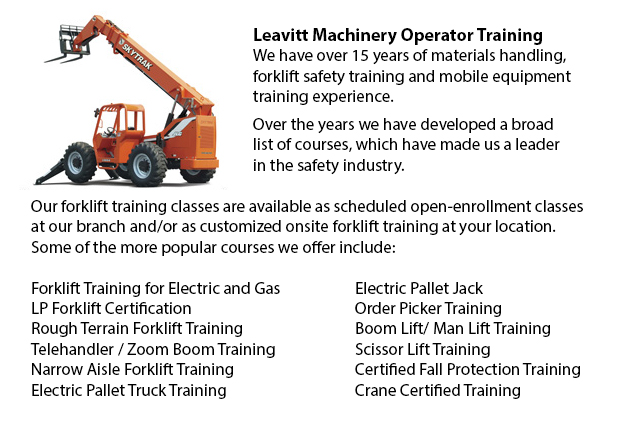
Telehandler License Burlington - The telehandler or telescopic handler is a generally utilized machine in agricultural and industrial applications. This machine is the same in appearance to a forklift and likewise functions in a similar manner, although telehandlers are much more like a crane than lift truck. It has a telescopic boom which can extend upward and forwards from the motor vehicle. The boom has the capability to fit one of several attachments like pallet forks, a bucket, a lift table or muck grab.
Pallet tines are the most popular attachment designed for the telehandler. This equipment is normally utilized for transporting loads to and from areas that a standard lift truck will find unreachable. Telehandlers are particularly useful for placing loads on rooftops for example, or for removing palletized cargo from with a trailer. A lot of the tasks that a telehandler could complete would otherwise require a crane and this particular machine could be costly, not always time efficient and not practical.
Since the boom raises or extends while bearing a load, it likewise acts as a lever. Despite the counterweights in the rear, this causes the machine to become increasingly unstable; thus, the advantage of the telehandler is really its greatest limitation. As the working radius increases, the lifting capacity lessens. The working radius is defined as the distance between the front of the wheels and the center of the load.
The telehandler with a 5000 lb capacity for example, with a retractable boom could safely lift as little as 400 lb at a completely extended boom at a low boom angle. Equivalent machines with a lift capacity of 5000 lbs and a retractable boom that could support as much as 10,000 lb with the boom raises to around 70 degrees. The operator has a load chart so as to help determine whether a particular lifting task can be completed in an efficient and safe way. This chart takes into consideration the height, the boom angle and the weight.
So as to monitor the telehandler, they come equipped with a computer which utilizes sensors. These sensors work to warn the operator, with some being able to cut controls to certain inputs if the limits of the motor vehicle are exceeded. Several telehandler types are likewise equipped together with front outriggers which are called mobile cranes. These really extend the lifting capability of the equipment while it is stationary.
-
Order Picker Training Burlington
Order Picker Training Burlington - Order picker's enables warehouse employees to lift pallets using forks. Also called a stock picker, this particular electrically-powered equipment is similar to a forklift except that an order picker is likewise uti... More -
Crane Certification Burlington
Crane Certification Burlington - The Crane Certification training program includes content recommended by industry regarding the efficient and safe operation of cranes. Trainees would learn the following: how to identify cranes and their component pa... More -
Overhead Crane Training Burlington
Overhead Crane Training Burlington - The overhead crane is a piece of equipment which can lift and move huge, heavy objects which can't be handled by hands. Typically, overhead cranes are fixed in place. These equipment are capable of moving huge vol... More -
Aerial Lift / Boom Lift / Man Lift / Scissor Lift Training in Burlington
Lift tables or scissor lifts could elevate both people and goods vertically. They are normally used in construction, commercial and industrial environments. Commonly, the use of a scissor lift is to lift and lower supplies from one floor of a job loc... More -
Telehandler Operator Training Burlington
Telehandler Operator Training Burlington - Telescopic Handler forklifts or telehandler forklifts are usually found on construction places and their popularity continues to rise. The versatility of telehandler forklifts ensures that they are a valuabl... More -
Forklift Training Classes Burlington
Forklift Training Classes Burlington - Forklift are heavy pieces of industrial machines that are made use of in transporting and the handling of merchandise and materials. They are often known as Lift trucks and are found in all sorts of businesses.... More -
Boom Lift Training Burlington
Boom Lift Training Burlington - Aerial platforms or also known as elevated work platforms are devices that allow workers to perform tasks and duties at elevated heights that would not be otherwise accessible. There are a variety of aerial lifts avail... More -
Bucket Truck Training Burlington
Bucket Truck Training Burlington - The Vehicle-Mounted Aerial Work Platform or also called bucket truck training program is intended to decrease the risk of incident and personal injury while working in close proximity or with bucket trucks by effici... More

Forklift Training Burlington
TOLL FREE: 1-888-254-6157
Burlington, Ontario
forklifttrainingburlington.com
Email Us
About Us


